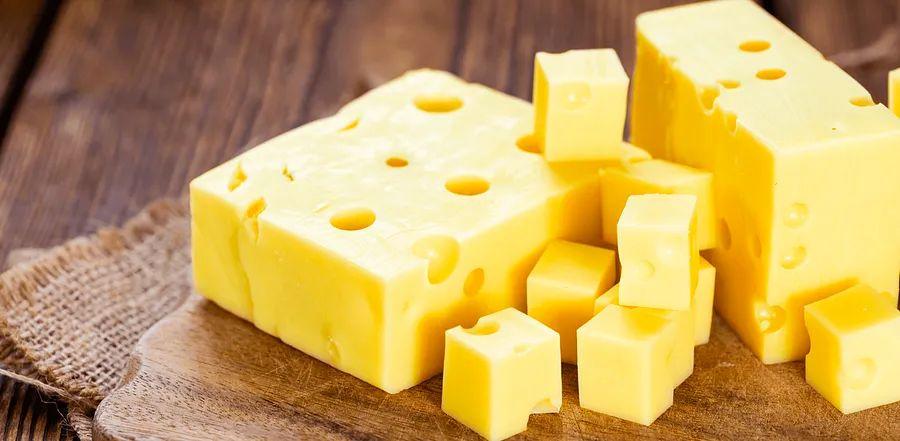What Causes Holes in Swiss Cheese?

Remember the old myth from your childhood that mice chew holes in Swiss cheese? Well, you can forget that story. Modern science confirms that rodents have nothing to do with the holes in your cheese slices.
Here's the real explanation behind those holes.

What Is Swiss Cheese?
When we mention 'Swiss cheese,' we’re referring to a variety of medium-hard cheeses, many of which are similar to Emmental, the original cheese from the Emmental region in Switzerland.
Swiss cheese is commonly known for the holes, or 'eyes,' that appear in most of its blocks. Varieties of Swiss cheese without these holes are called 'blind.'
Why Does Swiss Cheese Have Holes?
In 1917, William Clark provided a comprehensive explanation for the holes in Swiss cheese, attributing them to carbon dioxide produced by bacteria in the milk during the cheese-making process.
Clark's theory held for nearly a century — until a 2015 study by Agroscope, a Swiss agricultural institute, punctured that idea (pun intended).
According to Agroscope researchers, the holes are actually caused by tiny bits of hay present in the milk.

This new theory sheds light on why the holes in Swiss cheese have become smaller — or even disappeared — in recent years. When cheese is made in barns using open buckets, hay particles are likely to end up in the milk. These bits of hay weaken the curd structure, allowing gas to form and creating the holes, as explained by The Spruce Eats.
"The shift away from using traditional milking buckets" is what led to the change, explained Agroscope spokesman Regis Nyffeler, noting that hay bits once fell into the buckets and ultimately caused the holes.
With modern milk extraction methods now in use, it's no wonder we see fewer holes in our Swiss cheese today.
Swiss Cheese Recipes
Craving Swiss? We've got plenty of delicious ideas for you.
- Swiss Chicken Casserole
- Old Fashioned Mac and Cheese
- Classic Chicken Cordon Bleu
- Baked Ham and Cheese Sliders
- Broccoli Cheese Bake
- Asparagus Quiche

1

2
3

4

5
Evaluation :
5/5